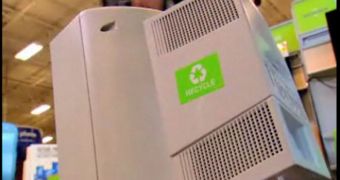Major companies know that they have to come up with innovative solutions to help their customers recycle, as green trends become more popular and dictate the evolution of profit margins for each and every enterprise, regardless of their field of activity.
At this point in time, Best Buy thought about an eco-conscious strategy which will liberate the household owners of the 10$ fee which they had to pay the company to dispose of their TVs displaying tube screens of up to 32 inches and flat panel screens of up to 60 inches. While clients could give up their cell-phones and other small electronics at no costs, they had to take a $10 bill out of their pockets whenever they thought about changing their old TV which started gathering dust.
Stricter regulations and flexible arrangements supported by major companies increased the customers' level of awareness regarding environmental preservation, as numbers indicate e-waste recycling operations have become more popular by up to 50% in 2011.
$10 may not be much, but taking into consideration that, in 2010, the company succeeded in collecting 83 million pounds of electronics in all its 1,367 US facilities, the financial sacrifice is visible. Best Buy's declared goal is to make as many Americans more responsible in terms of recycling processes.
Its flexibility and its desire to actually help the people improve their conduct are noticeable through other business ideas. For example, the company charges $100 to take unused electronics from their owner's house, but is willing to decrease the costs if the individuals consider replacing the unwanted item with a similar product available in the Best Buy stores.
While following this eco-friendly path, the company plans to be able to brag about collecting 1 billion pounds no-longer-needed electronics, until 2014.

 14 DAY TRIAL //
14 DAY TRIAL //